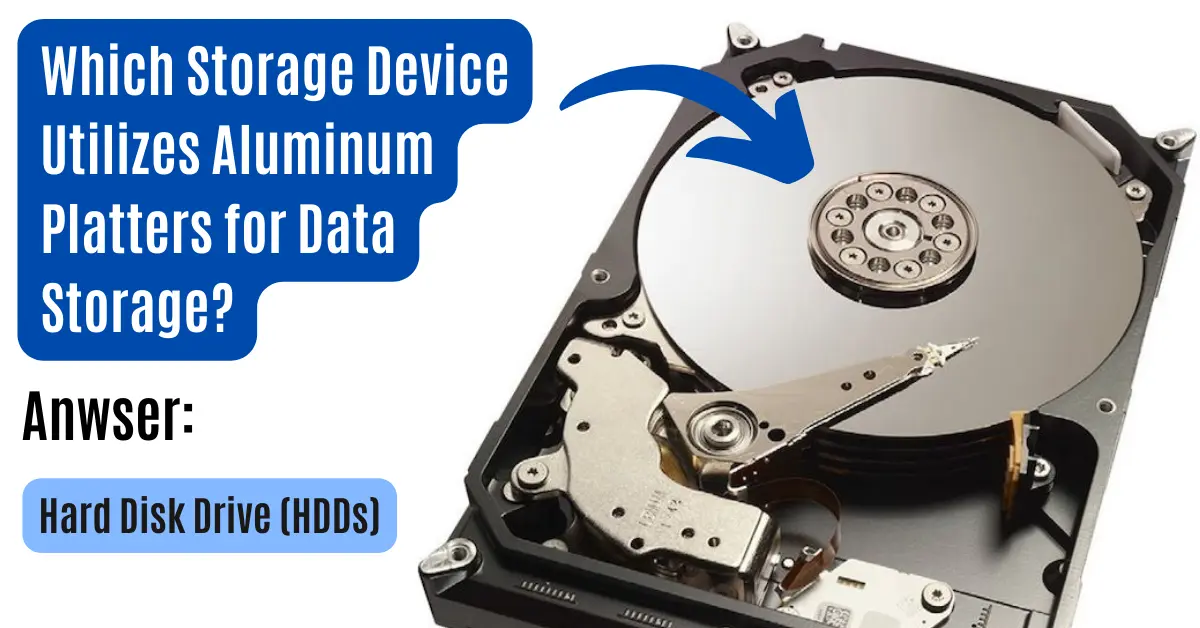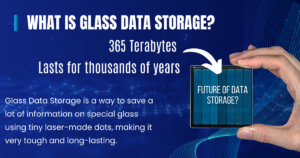Introduction
Are you wondering which storage device utilizes aluminum platters for data storage?
The answer is the hard disk drive (HDD).
HDDs uses one or more rigid rotating disks (platters) coated with magnetic material. These platters are often made of aluminum or glass, and they are used to store digital data. Aluminum platters in hard disk drives provide a sturdy, lightweight base for storing data, which is read and written by magnetic heads as the platters spin rapidly.
They are a classic yet efficient way to store digital data.
This blog will guide you through how HDDs, with their aluminum platters, play a crucial role in long-term data retention for computers and other tech devices.
Keep reading to discover more!
Table of Contents
Key Takeaways
- Hard Disk Drives (HDDs) use aluminum platters to store digital data securely. These platters are coated with a magnetic material, making them ideal for long-term storage in both personal and professional computers.
- Aluminum platters in HDDs offer durability, which allows them to withstand repeated use and impact without compromising performance or data integrity. This makes HDDs a reliable choice to store important files like documents, photos, and videos.
- Besides being durable, HDDs provide fast access to stored data thanks to the efficient design of aluminum platters. This ensures quick retrieval of information when needed, enhancing user experience by reducing wait times for file access.
- Using aluminum in HDD manufacturing keeps costs down, making them an economical option compared to other types of storage devices like SSDs. They offer large amounts of storage at a lower cost per gigabyte, which is great if you have a tight budget and need to store large amounts of data.
- Despite advancements in technology leading to new forms of digital storage, Hard Disk Drives remain popular in various electronic devices due to their effective use of aluminum platters. They balance cost and efficiency with performance needs across personal and business contexts effectively.
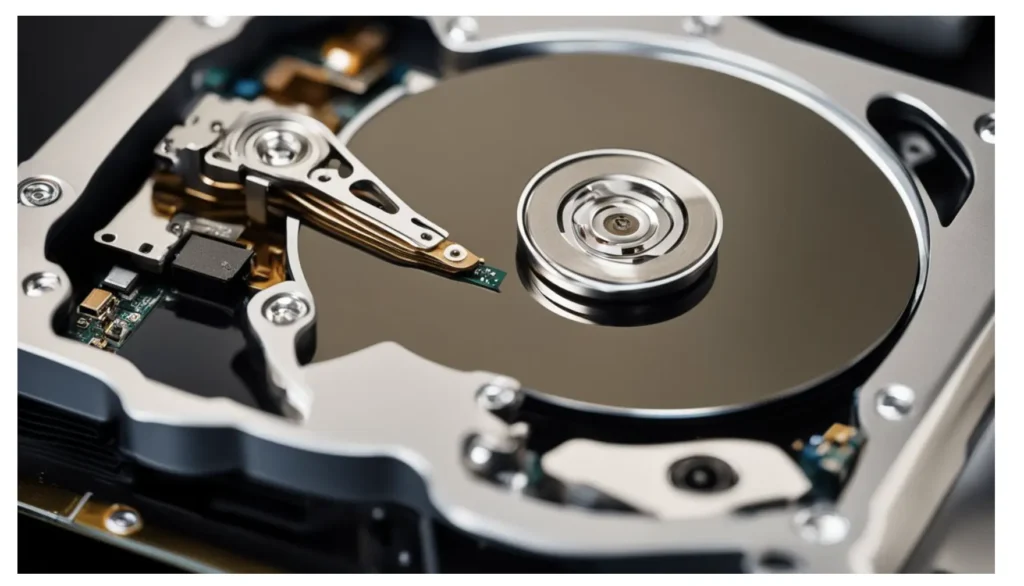
Brief Explanation of Storage Devices
Storage devices are tools that store data. They come in various types with unique functions and features.
In this post you can check a more complete overview of the three main types of data storage.
What is a Hard Disk Storage?
Storage devices are tools you use to save your digital data. Think of them as big containers where all your photos, videos, and documents live. There are many kinds, like USBs (SD cards), CDs, DVDs, and hard drives.
Each one works differently to hold onto the things you don’t want to lose.
A hard disk drive (HDD) is a special type of storage device that uses aluminum platters for keeping your data safe. These disks are tough and coated with a layer that lets them store lots of information magnetically.
Every time you save something on your computer or play a game, it’s likely being stored on these aluminum disks inside an HDD.
Using an HDD means my school projects and favorite games load super fast!
My experience

Types of storage devices
Storage devices are essential for storing and retrieving digital data. Here are the different types:
- Hard Disk Drives (HDDs) utilize aluminum platters for data storage.
- Solid-state drives (SSDs) use flash memory chips to store data.
- Magnetic tapes, such as DLT tapes, store data sequentially on a magnetic strip.
- Optical drives, like DVD and CDROM discs, use lasers to read and write data on optical discs.
- SD cards are small, portable storage devices commonly used in cameras and mobile devices.
Understanding these various storage devices helps in choosing the best option for your needs.
Overview of Data Storage using Aluminum Platters
Aluminum platters are a key part of Hard Disk Drives (HDDs). They store data using magnetic technology and are commonly used in personal and professional computers.
Composition of HDDsA
Hard Disk Drives (HDD) have rigid disks, or platters, made of aluminum. The read/write heads access data stored on the aluminum platters which are coated with a magnetic material for data storage.
HDDs are commonly used in computers and electronic devices for long-term data storage due to their efficient and reliable use of aluminum platters.
The capacity of an HDD is determined by the number and size of the aluminum platters it contains. Additionally, data stored on these platters can be accessed and retrieved quickly.
While solid state drives (SSDs) are becoming popular, HDDs remain widely used due to their utilization of aluminum platters for data storage.
How it works
The aluminum platters inside a hard disk drive (HDD) are where data storage happens. Multiple aluminum disks, coated with a magnetic material, store your digital files. The read/write heads on the HDD access these aluminum platters to retrieve and save data quickly for use in personal or professional computers.
When an HDD is in action, the read/write heads move over the spinning aluminum platters to read and write data. These durable aluminum platters allow for effective long-term data storage because they can endure repeated usage without compromising performance.
As the number and size of the aluminum platters increase, so does the capacity of the HDD. This means more space for all your important files like documents, photos, videos, and applications!
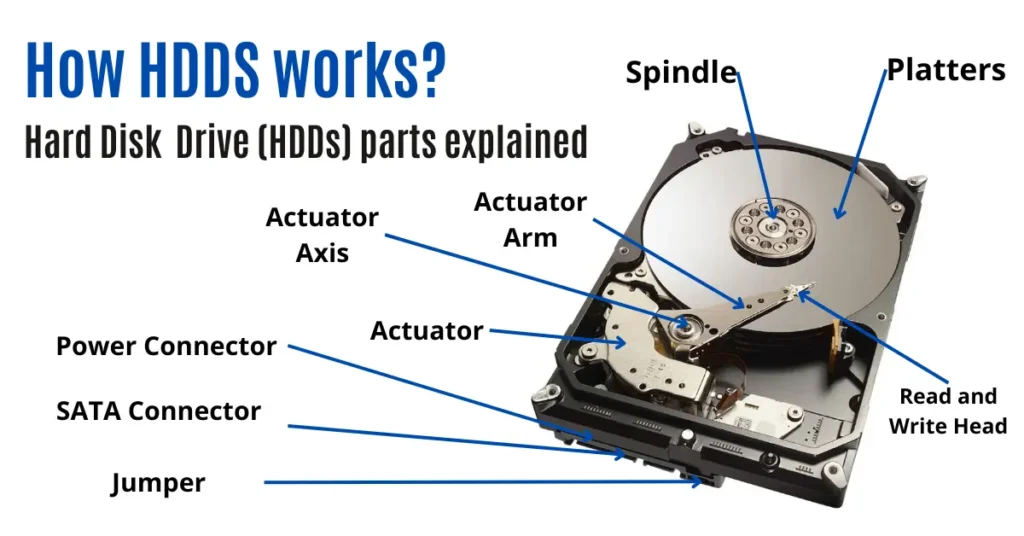
Benefits and Uses of Aluminum Platters for Data Storage
Aluminum platters in storage devices provide durable and cost-effective data storage solutions. They enable fast data access, making them widely used in personal and professional computers.
Superior durability
HDDs with aluminum platters offer excellent durability. The aluminum material provides strength to withstand repeated use and accidental impact. This ensures your data storage device remains robust even in demanding environments, enhancing the longevity of your storage solution.
Aluminum platters are known for their resilience, providing a reliable platform for long-term data storage. They are designed to endure regular read/write processes without compromising the integrity of stored data.
With this durability, you can trust that your HDD will maintain its performance over time, offering peace of mind for your data storage needs.
Fast data access
Now, let’s talk about how aluminum platters in HDDs allow for fast data access. The read/write heads swiftly retrieve data stored on the magnetic-coated aluminum platters, making it quick and efficient.
This enables you to access and retrieve your data without any delays or lags, ensuring a seamless experience when accessing information from your computer’s hard disk drive.
Aluminum platters in HDDs facilitate rapid data retrieval with their high-speed access times, allowing for fast processing of information and reducing wait times for accessing files and applications.
These features make them an ideal choice for situations requiring frequent data access, providing you with a responsive and reliable storage solution that meets your needs efficiently.
Cost-effective
Moving on from the fast data access, I think it is very important to understand that HDDs utilizing aluminum platters for data storage are also highly cost-effective. The use of aluminum in the platters ensures that the manufacturing costs of HDDs remain relatively low compared to other storage devices.
This makes them an economical choice for both personal and professional computer users who require large-scale data storage without breaking the bank, especially when considering their widespread use across various electronic devices.
Another key point is appreciating how these aluminum platters contribute to providing a cost-effective solution in the realm of digital data storage technology. For instance, with HDDs being known for their ability to store large amounts of data at a lower cost per gigabyte compared to solid-state drives (SSDs), they continue to be a budget-friendly option widely preferred by those seeking affordable yet reliable long-term storage solutions.
Widely used in personal and professional computers
HDDs, with their aluminum platters, are widely used in personal and professional computers for long-term data storage. The superior durability of the aluminum platters makes them suitable for repeated use in various electronic devices.
They allow for quick access to stored data and offer cost-effective solutions for large capacity storage needs.
The aluminum platters make HDDs a popular choice as they can withstand heavy usage while providing fast and reliable data access. These features have contributed to their widespread use in personal and professional computers, meeting both individual and business storage requirements effectively.
Conclusion
So which storage device utilizes aluminum platters for data storage?
Now you know that a hard disk drive (HDD) is the storage device that utilizes aluminum platters for data storage. These aluminum platters are super durable and can store data efficiently.
They are coated with a magnetic material to hold your data securely. Plus, they allow quick access to your stored information in computers and electronic devices. HDDs remain widely used due to their use of aluminum platters for reliable data storage.
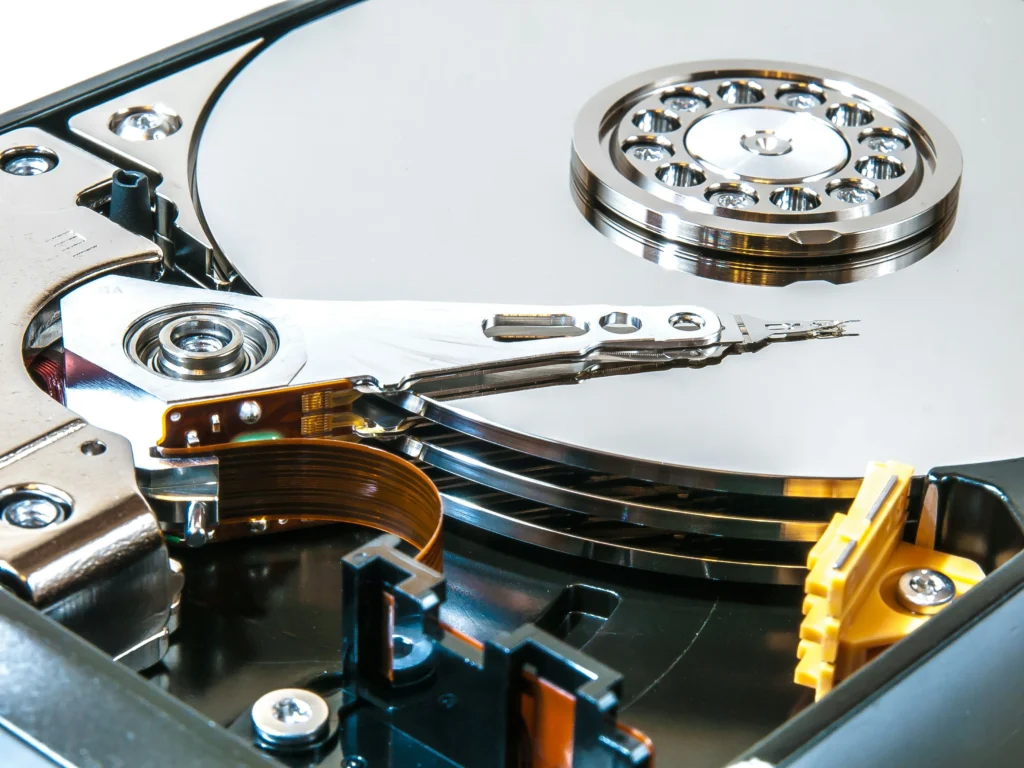
FAQs
1. Which Storage Device Utilizes Aluminum Platters for Data Storage??
You can find aluminum platters in magnetic disk storage devices. These are a type of computer storage where your data is saved.
2. Are DVD discs made with aluminum platters for storing information?
No, DVD discs do not use aluminum platters. Instead, they rely on optical storage technology to hold your data.
3. Can you tell me if solid-state drives (SSD) have aluminum disks inside?
Solid-state drives don’t contain any aluminum disks or magnetic platters; they store data using flash memory.
4. Is there a difference between magnetic disk storage and other types of external storage?
Yes, the main difference is that magnetic disk storage, like hard drives, uses aluminum or magnetic platters for saving files, while other external storages might use different methods like optical or solid-state technologies.
5. How does the use of aluminum disk storage impact the way my computer saves information?
Using an aluminum disk as a storage medium in magnetic disks allows your computer to write and read information magnetically, offering a durable and reliable way to keep your files safe.


